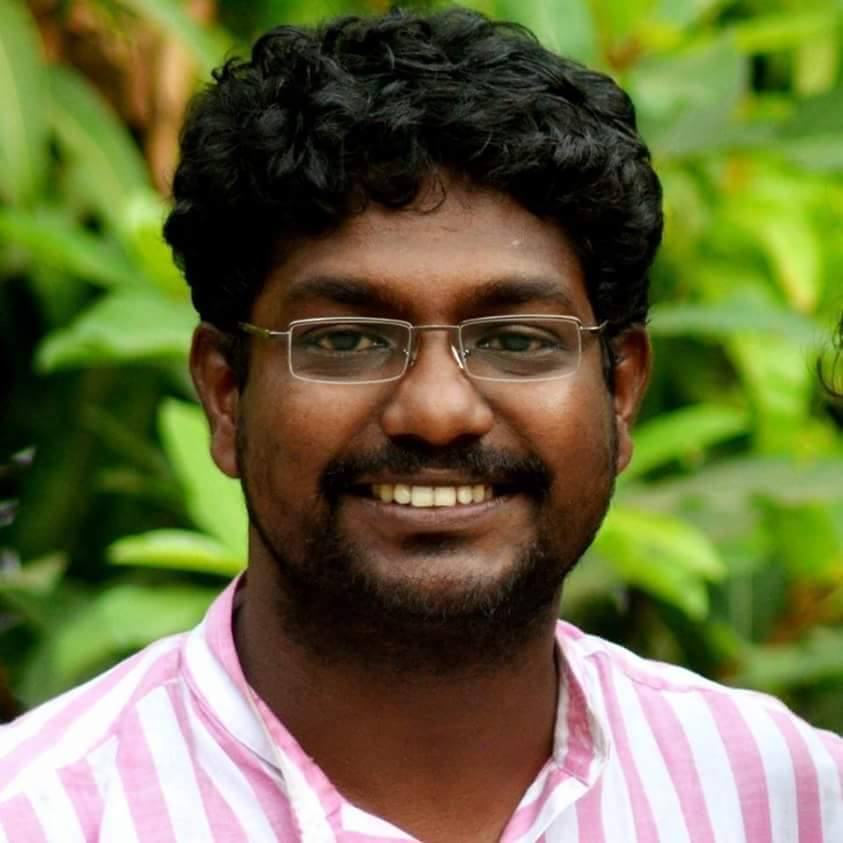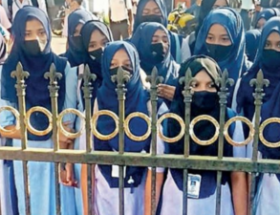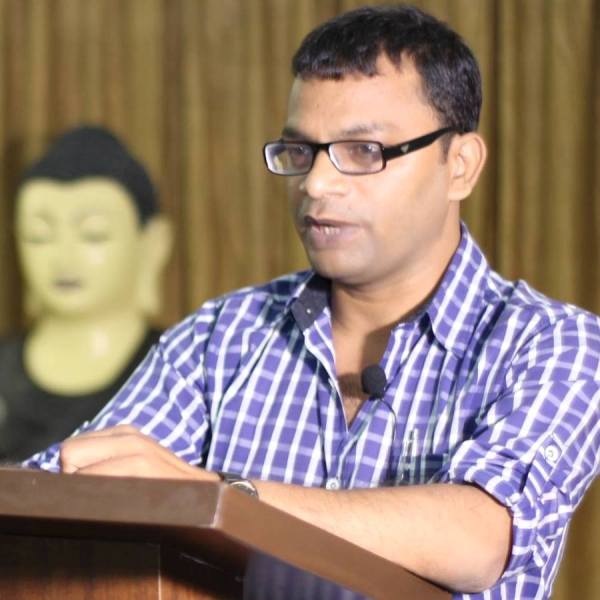Naveen (Nijam) Gara
 Prime Minister Narendra Modi’s picture replacing that of M K Gandhi at the charkha in an official annual calendar has kicked up a storm. Modi baiters have pounced upon this egregious ‘offence’ that the eternal propagandist has committed. It was one thing to appear on Reliance jio advertisements but to supersede the ‘father of the nation’ itself was untenable to many self-proclaimed centrists. But in some ways the evolution of Modi perhaps has its roots in the rise of Gandhi himself. This may appear to be a provocative proposition but nevertheless deserves consideration.
Prime Minister Narendra Modi’s picture replacing that of M K Gandhi at the charkha in an official annual calendar has kicked up a storm. Modi baiters have pounced upon this egregious ‘offence’ that the eternal propagandist has committed. It was one thing to appear on Reliance jio advertisements but to supersede the ‘father of the nation’ itself was untenable to many self-proclaimed centrists. But in some ways the evolution of Modi perhaps has its roots in the rise of Gandhi himself. This may appear to be a provocative proposition but nevertheless deserves consideration.
M K Gandhi is given credit for a lot of things but his most important contribution was to ensure status quo in the social sphere as power transferred hands between the British and the Indian elite in 1947. His magnanimous presence and carefully crafted and advertised larger-than-life image of a renunciant played a key role in bringing about an aura of unity among the inherently diverse conglomerate of castes and regions fancifully named India. His docile image of a half-naked elderly male with a walking stick in hand helped immensely in the idiomatic beating into submission of the vast majority of downtrodden people that had no stakes in the transfer of power.
As the post-1947 years and decades unfolded, it became clear that a change of guard at the helm did not change much in the lives of the lower strata, rather the stranglehold of the privileged classes became constitutionalized. A man acclaimed as a reformer vehemently opposed structural changes in the world around him. His ardent espousal of the old social order came alive when Dr Ambedkar exposed the dubiousness of Hindu religion in his ‘Annihilation of Caste’. As Ambedkar suggested that ‘Hindu society is a myth’, Gandhi struck back in a condescendingly paternalistic tone writing ‘(Ambedkar) proposes to leave …the very religion that is his and their common heritage.’
Publishing in the paradoxically named ‘Harijan’ (a term that dalits today have openly condemned, a term that is no longer in popular use, ironically coined by the Mahatma himself), Gandhi wrote that the law of ‘Varna’ and ‘Ashrama’ prescribes ‘each one of us to earn our bread by following the ancestral calling’ and defines ‘not our rights but our duties.’ As Ambedkar demanded separate electorates for the oppressed classes, Gandhi went on a hunger strike opposing such a move that ultimately led to the Poona pact in 1932 which eventually became the bedrock of legitimizing Hindu control over the oppressed. Another important contribution of Gandhi was spiritualization of the masses which effectively kept them ignorant and mired them in blind devotion rather than in scientific temper and rational pursuit of truth. Though this spiritualization was touted as secular, his constant invocation of ‘Ramarajya’ brought the Hindu god into national discourse.
A Mahatma who waxed eloquent on the meaning of freedom being complete only when women can walk freely in India at midnight chose to ignore the injustice meted out to Sita and Soorpanakha in Ramayana at the hands of the establishment heroes. Thus, effortlessly, while proclaiming love for all religions and castes, he was successful in turning inherently Aryan and Brahminical icons and concepts that were tools in the hands of oppressors into issues that a new conceptually secular nation had to embrace. A man that extolled the virtues of non-violence somehow missed out on the fact that Buddha was already a recognized torchbearer of ahimsa as opposed to warrior prince Rama who did not hesitate to kill Vali or Shambuka in pursuit of his own goals. What else other than Brahminism drove Gandhi to pick Rama as an icon instead of Buddha, the quintessential anti-Brahmin?

Thus the father of the nation buttressed hinduism in to the national psyche of a country that framed lofty constitutional ideals on paper. And as we have seen in the ensuing years, the work of the gatekeepers of hinduism such as Sangh Parivar was already half done because all they had to do was to build upon the foundation provided by Gandhi. In a population enthralled by the utopian promise of Ramarajya that their beloved Bapu dreamt of, it was a walk in the park for the Sangh to instigate mad frenzy for building a grand Ram temple in Ayodhya. And in the post-Indira Gandhi era when Congress lacked a populist leader and as the middle classes grew impatient with the Mahatma’s party, political power naturally flowed into the Sangh’s brainchild, the Bharatiya Janata Party (BJP).
The BJP, the proverbial camel in the grand tent that Mahatma conceptualized now engulfed the tent itself threatening the very existence of the party that anchored the tent. In a roundabout way, Mahatma’s chickens in the form of blind spiritualism, love for varnashrama dharma and nominal renunciation came home to roost in a much stronger and monstrous form i.e. BJP. Thus the refusal to counteract the deleterious effects of Vedic Brahmanism when the nation was nascent cost us dear. Preaching duplicitous ideals of self-reformation rather than inculcating scientific temper in the masses led to the takeover by the rightwing since the populace was already primed for such forces.
In such a state, Narendra Modi found it utterly easy to captivate the imagination of the great Indian middle class hindu vote. He did not even have to feign non-violence because by now, the Mahatma’s Indians felt self-righteous in venting their anger towards imagined threats to their beloved hindu religion. Modi just had to pay lip-service to his tea-vendor origins unlike Mahatma who had to forego modern clothing and adopt an ostentatiously simple living. While Gandhi made it difficult for the average Indian to see through his seemingly noble intentions, Modi did not have to make any such effort – he could spew venom on the constructed enemy, engage in crassly divisive rhetoric and yet garner the hindu majority middle-class vote, the same sections that eulogized Gandhi.
Just as Gandhi’s yarn-spinning had no impact on saving the dignity and lives of the handloom weavers that continue to commit suicides, Modi’s choreographed yoga sessions have no role in healing the sick and the poor that are dying due to lack of a dependable public health system in the digital land. Where Mahatma’s ritualistic inter-caste dining and garbage cleaning in ‘harijan’ colonies failed to banish the scourge of caste, Modi’s Swachh Bharat and stand-up India failed to alleviate the suffering of sanitation workers and other dalits or even address the hygiene problem.
In the same vein that Mahatma’s steadfast support to religion obviously hindered progress of women in India, Modi’s ‘selfie with beti’ will be an empty-handed exercise in vain while he remains firmly entrenched in the love of vedas and Manu Smriti. In both the case of the Mahatma and Modi, the lack of scrutiny and rather wilful propaganda of convivial media machinery led to their meteoric rise. In a glaring disparity, while Mahatma readily condemned openly violent and discriminatory acts to remain above the fray, Modi stood mute while students were slapped with sedition charges, driven to death, tanners assaulted by cow hooligans and innocent citizens killed for their meatarian food practices. Yet Modi remains all powerful among a sizeable section of Indians.
The icing on the cake, however, is the fact that Modi has now assumed a role that is much larger than any public figure in contemporary and recent Indian history which gave him an unassailable authority in taking decisions that will hurt the very classes that voted him to power. His demonetization move has severely hurt every single section of the society including the core BJP voters i.e. traders and middle classes while unduly benefitting a select few on the pretext of a cashless utopia. Not so paradoxically, the love for obsequiousness and unquestioned loyalty to the ‘noble’ leader that the Mahatma encouraged among Indians is now coming in handy for Modi. Hence, it is only obvious that he felt it right to replace the charkha king.
~~~
Naveen (Nijam) Gara is a Gastroenterologist & Hepatologist based in the USA. Born in Hyderabad, he is staunchly vocal for the cause of the downtrodden.










